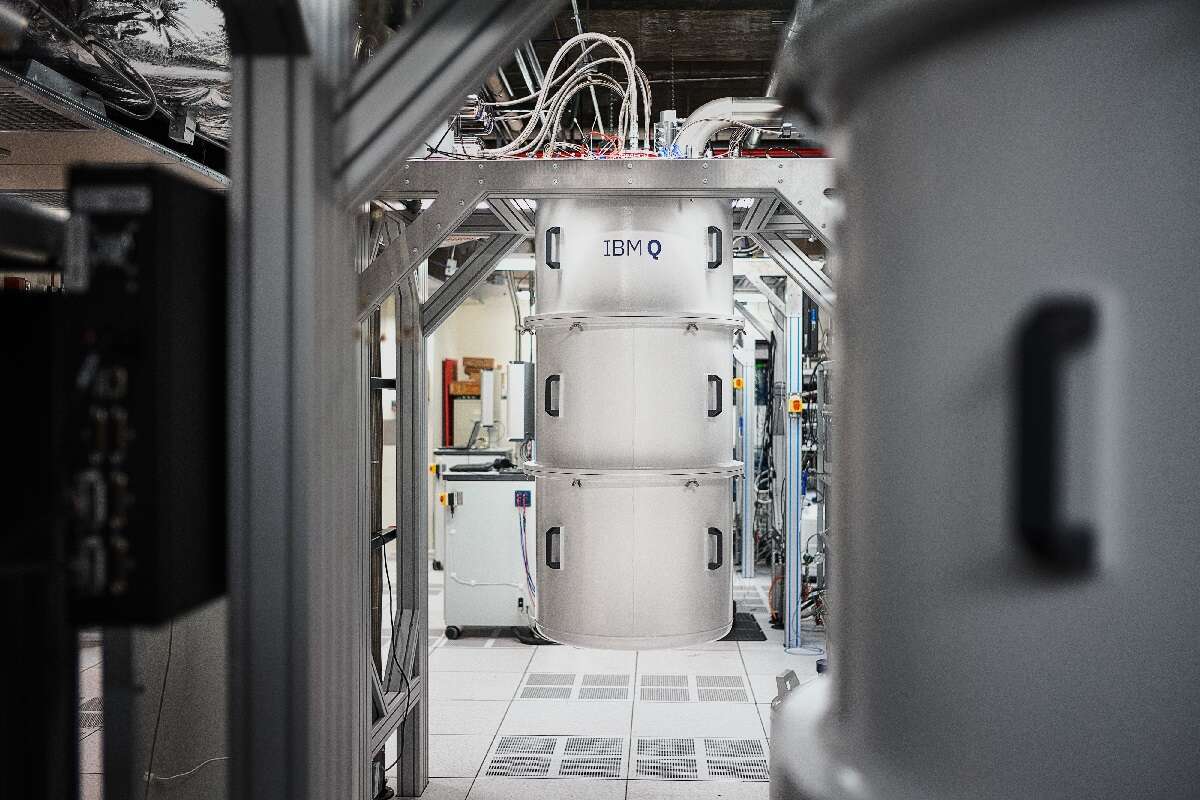
IBM hopes to cement its position as one of the world leaders in quantum computing with a new $100m fund to develop the first 100,000-qubit quantum-centric supercomputer. It is working with universities in Japan and the US on the project. The announcement comes as Nvidia also confirmed it would support development of a quantum machine in Germany.

Working with the University of Tokyo and the University of Chicago, IBM says its ten-year project will “result in a machine that can serve as a foundation to address some of the world’s most pressing problems that even the most advanced supercomputers of today may never be able to solve”. It plans to announce further partnerships in the future.
IBM says a global collaboration is required to appreciate the value of quantum computing, with organisations and companies working across industry and research institutions. The company says these new partnerships will help advance the underlying technologies of a quantum-centric supercomputer, and build the components required to scale such a machine.
“Over the past several years, IBM has been at the forefront of introducing quantum technology to the world,” said Arvind Krishna, Chairman and CEO, IBM. “We have achieved significant progress along our roadmap and mission to globally establish useful quantum technology, so much so that we can now, with our partners, truly begin to explore and develop a new class of supercomputing anchored by quantum.”
Getting to that goal will require significant innovations in the computing stack that includes advancements in quantum communication to improve the speed of connections. There also needs to be improvements in workflows between classical and quantum machines, IBM says.
A decade-long development plan for IBM quantum
The plan is to build on the way classical supercomputers work but with quantum processors and communication systems to take advantage of the way these quantum mechanical systems operate. Classical supercomputers are still being actively developed as quantum machines are not close to matching the accuracy of the most advanced systems.
Frontier, the first supercomputer to pass the exaflop level of compute power is still the only machine to reach that point, operating at 1.19 exaflops per second. There are other exascale machines on the horizon but IBM and others hope the quantum approach will provide a viable alternative.
IBM’s vision for the 100,000-qubit quantum-centric supercomputer will include the Quantum System Two at the centre, with multiple connected quantum processing units starting with the new 133-qubit Heron. It will also include error mitigation and integration with the hybrid cloud for classical computing input.
“Achieving breakthroughs at scale in quantum technology requires deeply rooted and productive collaboration around the world and across a broad range of industry, academic, and government partners,” said Paul Alivisatos, president of the University of Chicago. “Quantum information science and technology is at a crossroads where foundational discovery and technical innovation will combine to create real breakthroughs. The University of Chicago is thrilled to partner in this endeavour.”
There are several “milestones” listed by IBM as part of the new partnership including some of those that already form part of IBM’s own quantum computing roadmap. One of these is the new Heron processor that is a complete redesign of any previous IBM QPU that has a two-qubit gate for higher performance and is modular by design.
Quantum System Two, the underlying system that will connect the processors and other elements is currently under development. It is one of the more significant parts of the quantum-centric supercomputer roadmap as it includes control systems and cryogenics to cool the QPU. System Two is expected to be online by the end of the year.
IBM says the introduction of middleware for quantum, a set of tools to run workloads on both classical and quantum processors is another key component. This includes tools for decomposing, parallel execution, and reconstructing workloads.
Nvidia joins the quantum world
Not to be left out of the quantum ecosystem, Nvidia has developed middleware and software kits for quantum-classical solutions. Known as CUDA Quantum, it simulates quantum processors using GPUs, and allows for integration between simulations, GPUs and real QPUs.
Nvidia announced a series of initiatives around quantum and classical supercomputing at the ISC 2023 conference in Hamburg. This includes plans to provide custom-designed Arm-based chips for a new petascale supercomputer at the University of Bristol. Isambard 3 is being built by Hewlett Packard Enterprise (HPE) using the Nvidia Grace CPU supercomputer chip,
In the quantum world, Nvidia said it was working with Rolls-Royce and quantum software company Classiq to create new algorithms that advance jet engine efficiency. This includes using Nvidia A1000 graphic cards to simulate a quantum circuit so that the new algorithms can be developed and tested for when quantum processors are ready to perform the task.
“Designing jet engines, which are one of the most complicated devices on earth, is expensive and computationally challenging,” said Ian Buck, vice president of hyperscale and HPC at Nvidia. “Nvidia’s quantum computing platform gives Rolls-Royce a potential path to tackle these problems head-on while accelerating its research and future development of more efficient jet engines.”
The company is also using its Grace CPU, built on Arm architecture for quantum simulations at scale. It is powering the first GPU-accelerated quantum computing system DGX Quantum. This uses the CUDA Quantum open-source programming model, the Nvidia chips and a quantum control platform called OPX which is built by Quantum Machines. It can then be integrated with a range of quantum processing units.
Read more: Can quantum computing make the grid sustainable?
Homepage image of IBM’s System One quantum computer by Misha Friedman/Getty Images






